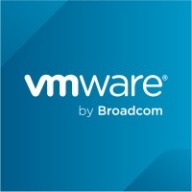

VMware Aria Operations for Applications and AWS Auto Scaling are tools for managing applications at scale. VMware Aria Operations is preferred for its comprehensive monitoring capabilities, while AWS Auto Scaling is favored for its seamless scalability features.
Features: VMware Aria Operations for Applications offers deep analytic capabilities, robust monitoring features, and comprehensive monitoring capabilities. AWS Auto Scaling provides automated scaling functionality, ease of integration with other AWS services, and seamless scalability features.
Room for Improvement: VMware needs enhancements in ease of use, integration with third-party tools, and usability improvements. AWS requires better documentation, more intuitive setup processes, and improved integration features.
Ease of Deployment and Customer Service: VMware Aria Operations for Applications has a steeper learning curve with strong customer support. AWS Auto Scaling offers straightforward deployment but lacks in-depth support.
Pricing and ROI: VMware Aria Operations has a higher upfront investment with significant long-term benefits. AWS Auto Scaling is cost-effective for on-demand scaling needs.
| Product | Market Share (%) |
|---|---|
| AWS Auto Scaling | 0.3% |
| VMware Aria Operations for Applications | 1.0% |
| Other | 98.7% |


| Company Size | Count |
|---|---|
| Small Business | 11 |
| Midsize Enterprise | 2 |
| Large Enterprise | 11 |
| Company Size | Count |
|---|---|
| Small Business | 4 |
| Midsize Enterprise | 1 |
| Large Enterprise | 10 |
AWS Auto Scaling monitors your applications and automatically adjusts capacity to maintain steady, predictable performance at the lowest possible cost. Using AWS Auto Scaling, it’s easy to setup application scaling for multiple resources across multiple services in minutes. The service provides a simple, powerful user interface that lets you build scaling plans for resources including Amazon EC2 instances and Spot Fleets, Amazon ECS tasks, Amazon DynamoDB tables and indexes, and Amazon Aurora Replicas. AWS Auto Scaling makes scaling simple with recommendations that allow you to optimize performance, costs, or balance between them. If you’re already using Amazon EC2 Auto Scaling to dynamically scale your Amazon EC2 instances, you can now combine it with AWS Auto Scaling to scale additional resources for other AWS services. With AWS Auto Scaling, your applications always have the right resources at the right time.
VMware Tanzu Observability by Wavefront is a powerful tool for monitoring and analyzing the performance and availability of applications and infrastructure in real-time.
With its comprehensive monitoring capabilities, visualizing and analyzing data becomes effortless. The real-time alerting system ensures timely issue resolution, while scalability and a user-friendly interface provide a seamless experience for smooth operations.
We monitor all Application Performance Monitoring (APM) and Observability reviews to prevent fraudulent reviews and keep review quality high. We do not post reviews by company employees or direct competitors. We validate each review for authenticity via cross-reference with LinkedIn, and personal follow-up with the reviewer when necessary.